Not enough light? No problem!
Check out our recommendations for low light indoor plants.
Let me start by saying: plants love light. They require light for photosynthesis which is the process by which they turn carbon dioxide and water into their food and the oxygen that gets released back into the environment.
I particularly love the simplicity of the process. But is it? I must confess it felt a little discouraging when I purchased my variegated rubber plant and brought it home to place it in a bright spot in my living room, just to find that, although bright, was not even close to be bright enough for it and the plant started losing all of its leaves.
As a new plant enthusiast, I started doing some research online about what could have happened and how to fix it. And generally, it comes down to the very delicate balance between light and water. First, I tried giving more water only to find the remaining leaves turning yellow and brown due to overwatering. Then I realized I needed to find a more suitable spot for it. That’s the story of how it went to the porch and it has truly been happily ever after.
First we have to understand that filtered light is very different than unfiltered light, and that the closest a plant is from a window and the more view of the sky it has, the more light it is going to get, the bigger and greener it is going to be, generally speaking. But sometimes we simply don’t have the perfect spot, and for those like me, who have started a sizable plant collection, we quickly run out of windows.
The following is my fail-proof list of low light – friendly plants that can still add that touch of green that we would like to have in every space while staying pretty and healthy:
1. Pothos:
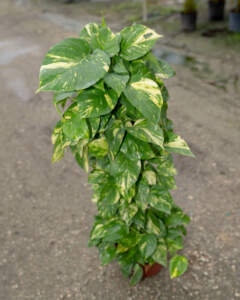 This plant tolerates low to medium light very well. Under brighter light conditions, Pothos will have more variegation on its leaves but will survive just fine and look great just close to a window.
This plant tolerates low to medium light very well. Under brighter light conditions, Pothos will have more variegation on its leaves but will survive just fine and look great just close to a window.
2. Monstera:
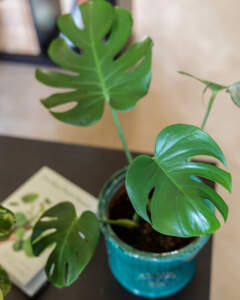 This showstopper is commonly found on the ground in the rainforest, so it tolerates very well low to medium light conditions while providing with their ever popular large, fenestrated leaves.
This showstopper is commonly found on the ground in the rainforest, so it tolerates very well low to medium light conditions while providing with their ever popular large, fenestrated leaves.
3. Snake plant:
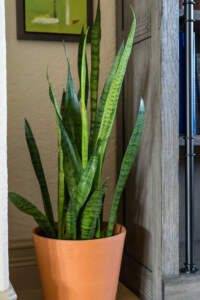 Also known as Sansevieria, this plant can handle low to medium light and does not like direct sun, as it burns its leaves. Perfect as a statement plant in a corner of your living room or bedroom.
Also known as Sansevieria, this plant can handle low to medium light and does not like direct sun, as it burns its leaves. Perfect as a statement plant in a corner of your living room or bedroom.
4. Dieffenbachia:
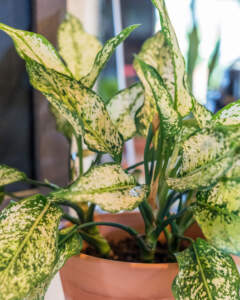 Commonly known as dumb cane plant, it literally lives behind a wall with no view of the sky at my house and it is happy and thriving. Very decorative with its green leaves with white streaks. Remember to be careful with children and pets, as its leaves are toxic if chewed.
Commonly known as dumb cane plant, it literally lives behind a wall with no view of the sky at my house and it is happy and thriving. Very decorative with its green leaves with white streaks. Remember to be careful with children and pets, as its leaves are toxic if chewed.
5. Calathea:
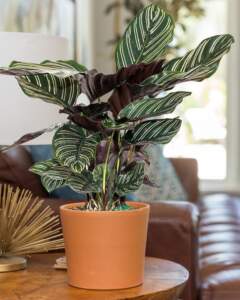 I love calatheas for their beautiful foliage that appears to be hand painted and has touches of purple and pink, lines or spots, you name it! As they are native to tropical forests, they are used to, and in fact prefer low to medium light conditions. Direct sun will make its leaves brown and crispy in the edges.
I love calatheas for their beautiful foliage that appears to be hand painted and has touches of purple and pink, lines or spots, you name it! As they are native to tropical forests, they are used to, and in fact prefer low to medium light conditions. Direct sun will make its leaves brown and crispy in the edges.
6. Aglaonema:
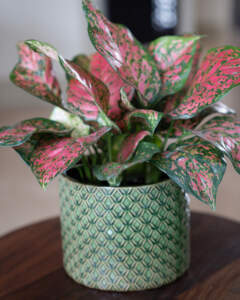 Also known as Chinese Evergreen, this is another timeless ornamental plant that lives behind a wall in my house as it is perfectly happy with low light conditions.
Also known as Chinese Evergreen, this is another timeless ornamental plant that lives behind a wall in my house as it is perfectly happy with low light conditions.
7. Pilea peperomides:
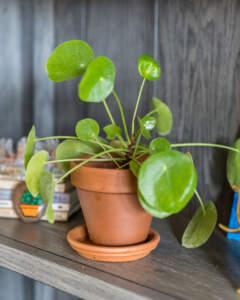 The Chinese money plant, friendship plant, pancake plant, is simply too cute to pass! It is easy to care for and does very well under low to medium light conditions. Proximity to a window will suffice.
The Chinese money plant, friendship plant, pancake plant, is simply too cute to pass! It is easy to care for and does very well under low to medium light conditions. Proximity to a window will suffice.
8. Fittonia:
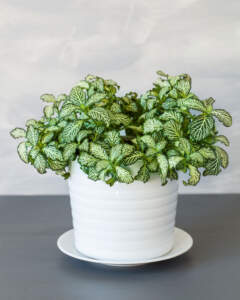 This is another plant with beautiful foliage that does well under low light conditions. I keep it on a bookshelf that is rather dark, along with a rabbit foot fern, snakeplants, pilea, pothos, basically the low-light gang!
This is another plant with beautiful foliage that does well under low light conditions. I keep it on a bookshelf that is rather dark, along with a rabbit foot fern, snakeplants, pilea, pothos, basically the low-light gang!
9. ZZ plant:
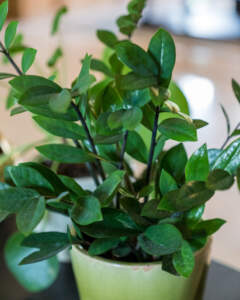 This is probably the easiest plant to care for. You can throw anything at it and it still will look perfect. Low light, medium light, little water, a lot of water. It doesn’t matter. It will survive.
This is probably the easiest plant to care for. You can throw anything at it and it still will look perfect. Low light, medium light, little water, a lot of water. It doesn’t matter. It will survive.
10. Ferns:
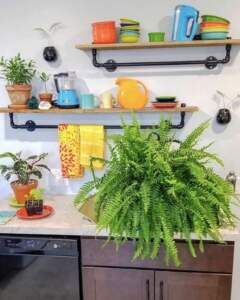 As a tropical plant, ferns do well under the canopy, close to the ground, in high humidity and rather dark areas, such a bathroom. Like any other plant though, some light is required for photosynthesis.
As a tropical plant, ferns do well under the canopy, close to the ground, in high humidity and rather dark areas, such a bathroom. Like any other plant though, some light is required for photosynthesis.
It is important to remember that, although these plants do well in low light conditions, if you have just brought home your new plant baby, give it a chance to acclimatize before placing it under low light: check the soil, water if it is dry and put it next to a window in its original nursery pot for at least a week before repotting and bringing it to its definitive spot. These important steps will minimize any consequences from the shock the plant goes through due to change in conditions and will help it adapt much better to its new home.


